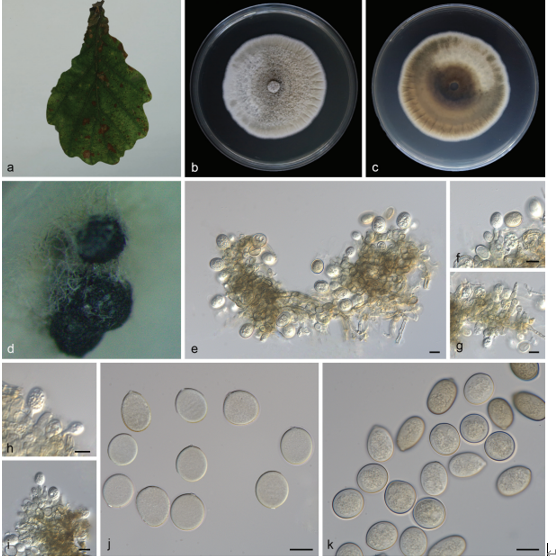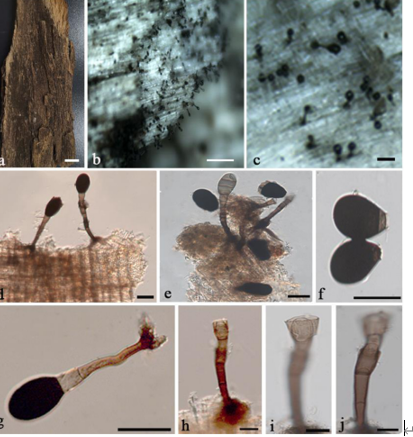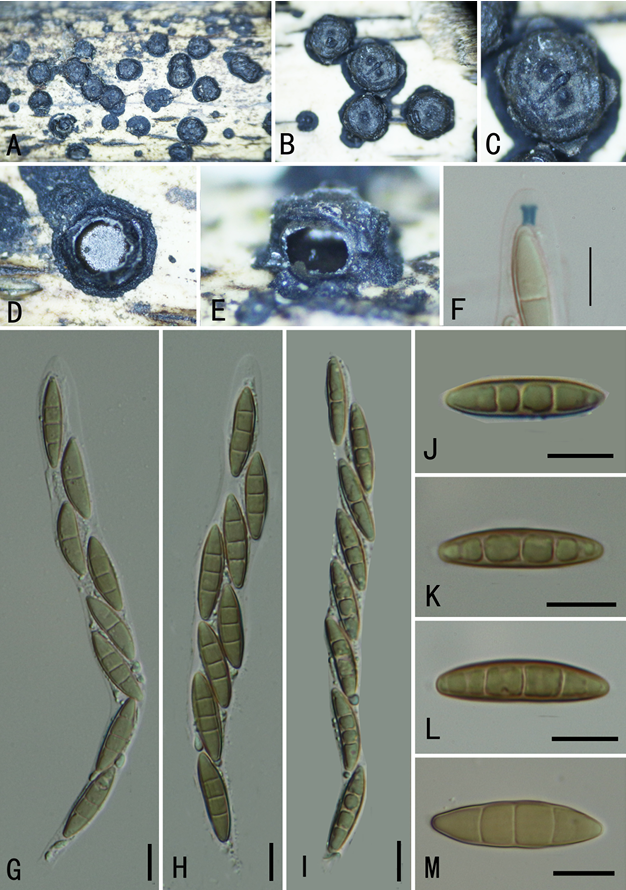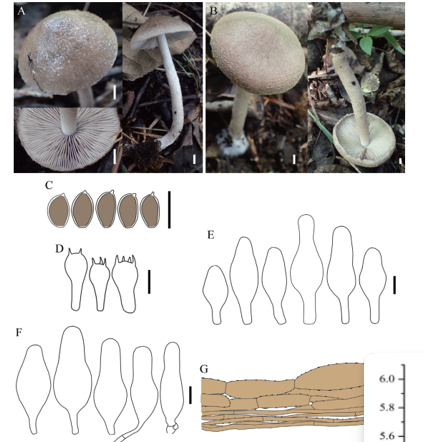Agaricus alboumbonatus R.L. Zhao & B. Cao, sp. nov. 2020
Fungal Names: FN 570666
Holotype: CHINA. HEILONGJIANG: Heihe, Aihui (49°38′3″N, 127°8′43″E; 360 m asl), scattered on ground in mixed forest, 3 Sep 2017, Zhilin Ling ZRL20171140 (holotype HMAS 279929).
Morphological description
Pileus 70–140 mm wide, at first broadly parabolic, then convex, and finally applanate with umbonate center; surface dry, at first white throughout, forming fibrillose scales; light yellowish tone at the disc in age; edge slightly exceeding. Lamellae free, up to 5–6 mm broad, crowded, with intercalated lamellulae, at first pink or pinkish brown, finally dark brown. Stipe 70–175 × 10–15 mm, cylindrical, clavate, hollow, smooth, white, becoming yellowish when bruised.
Annulus superior, membranous, white, smooth on the white on cutting. Odor of almond. KOH reaction yellow; upper surface and floccose on the lower surface. Context Schäffer’s reaction reddish orange on pileus and stipe.
Basidiospores 5.5–6.5(–7) × 4–4.5(–5) μm [x¯= 6.1 × 4.3 μm, Q = 1.3–1.5(–1.6), Qm = 1.4, n = 30], ellipsoid or ovoid, smooth, thick-walled, brown. Basidia 19–25 × 7.5–8.5 μm, 4-spored, rarely 2-spored, clavate or slightly truncate at the apex, hyaline, smooth. Cheilocystidia 8–21 × 7.5–12 μm, hyaline, simple or sometimes catenulate, consisting of ellipsoid or globose elements. Pileipellis a cutis of cylindrical hyphae, 3.5–14.5 μm wide, not or slightly constricted at septa hyaline.
Habitat: on ground in mixed (Betula and Pinus) forest.
Distribution: northeast China.
GenBank Accession: ITS MK617943; 28S MK617855; tef1 MK614449
Notes: Agaricus alboumbonatus is represented by seven specimens from Heilongjiang, northeast China, in a well- supported clade (93/1.0 BS/PP) (FIG. 1). The species is similar to A. abruptibulbus because of similar pileus and basidiospore sizes and shapes. However, A. abruptibulbus has a distinct bulbous stipe base (Parra 2013).
Reference: Bin Cao , Mao-Qiang He , Zhi-Lin Ling et al. (2020): A revision of Agaricus section Arvenses with nine new species from China.
Agaricus alboumbonatus (ZRL20171140, holotype). A, B. Basidiomes. C. Basidiospores. D. Basidia. E. Pileipellis hyphae.F. Cheilocystidia. Bars: A, B = 2 cm; C–F = 5 μm









